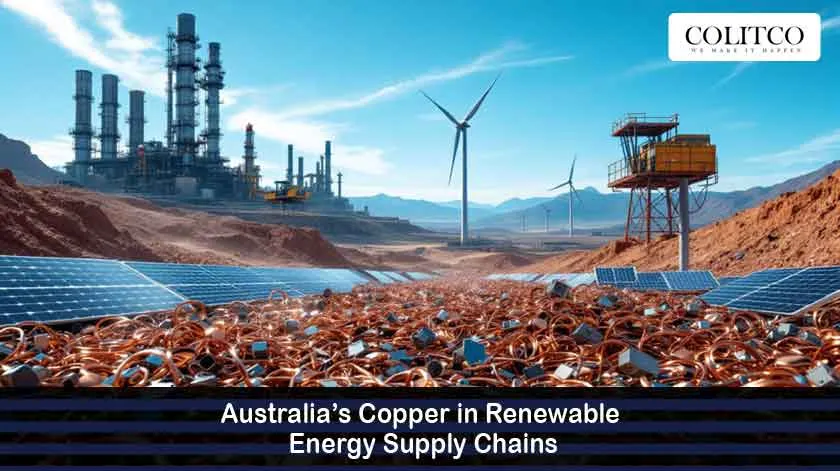Copper Demand Driven by Renewable Energy Growth
In 2025, as many countries transition to renewable sources of power, copper demand for renewable energy projects is expected to surge sharply. The high conductivity and serviceability of the metal will earn it the necessary importance in all power cabling applications to turbine generators. Copper is a key component in power generation and transmission on the grid, unlike other commodities, which makes it an indispensable aspect of the energy transition.
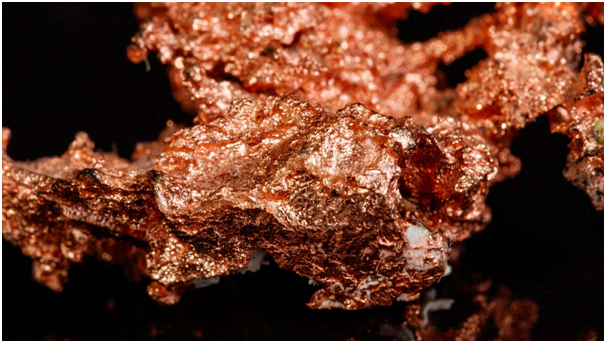
Copper is a key component in power generation and transmission.
Industry pundits forecast that the clean-energy infrastructure will consume copper in excess of one million metric tons annually by 2035. The massive boom is attributed to the massive solar and wind installation projects, electric cars, and energy storage systems. As renewable capacity grows in Asia, Europe, and North America, demand is increasing faster than mine supply, resulting in a worldwide supply shortage that is expected to continue through 2025.
Location of Australia in the World Supply of Copper
Australia has been among the world’s leading copper producers, with deposits located in South Australia, Queensland, and Western Australia. Mining infrastructure is well-developed, and the regulatory environment is stable, thus making the country a reliable supplier of its products in the face of tightening global markets.
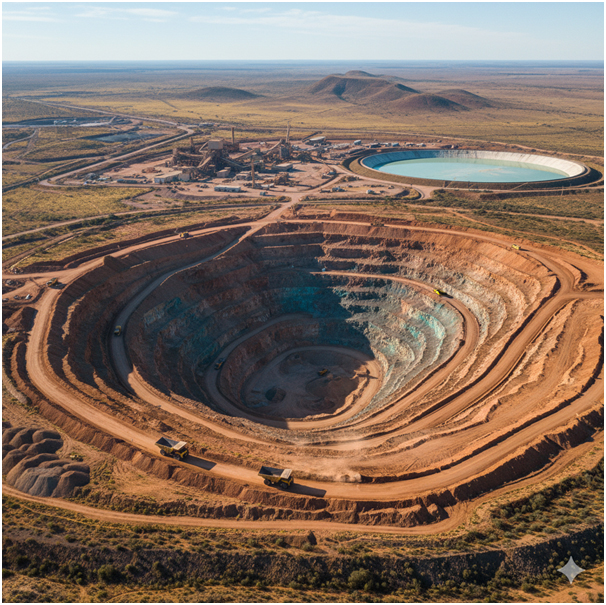
Australia’s copper mines are scaling up production to meet the renewable energy boom.
The Australian government has identified copper as a critical mineral, which is essential to shift to net-zero energy systems. The revised 2025 policy frameworks now favour responsible mining, recycling, and domestic refining as a means to provide supply chain resilience. The production growth has been stable, but there have been few discoveries and a decline in ore grades, which have put a strain on production. New exploration activity is hence growing as global manufacturers are making long-term offtake commitments.
Solar and Wind Technology Copper
Compared to traditional sources of power, renewable energy systems require a significant amount of copper. One wind turbine can contain more than four tonnes of copper wire in its generator coils, transformers, and cabling. Solar farms, on the other hand, require inverters, grounding systems, and grid interconnections made of copper.
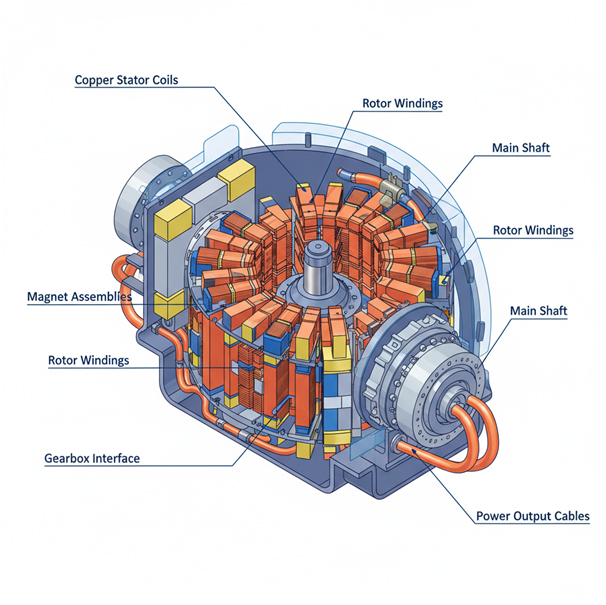
Wind turbines require extensive copper wiring for power transmission and energy efficiency.
Copper intensity increases as the number of renewable installations increases. This predisposes the metal as a key to the clean-energy economy. The grid expansion projects in Australia and Southeast Asia for 2025 are driving consumption in the region, with the government having established a framework of renewable targets within the National Energy Transformation Partnership.
ASX Copper Companies to the advantage
Some companies listed on the ASX are leading the way in addressing the increasing demand for copper. BHP, with its Olympic Dam and Oak Dam, is the largest producer in Australia and continues to invest in expansive projects. Sandfire Resources has strengthened its global presence with the Motheo Copper Mine in Botswana and the DeGrussa operation in Western Australia, positioning it as a major mid-tier supplier.
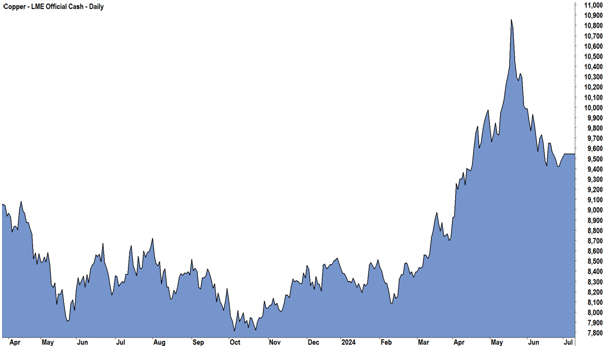
ASX copper producers benefit from rising global demand linked to renewable energy growth.
Other companies, such as 29Metals, Aeris Resources, and Metals X, are exploring new deposits as part of the green transition. These firms are emphasising efficiency, automation, and sustainable production practices to meet the environmental, social, and governance (ESG) requirements that institutional investors demand for sustainability.
The increasing association of copper demand with renewable energy and its long-term profitability has positioned ASX miners to attract new capital in 2025.
Supply Limit and Price Prospect
Although operations have expanded, supply limitations remain a problem. The markets have been tightened by the disruption of key mines around the world and the sloughing of permit approvals. Recent predictions indicate that copper prices will not fall below US$10,000 per tonne in 2025, driven by growing renewable demand and reduced inventories.
Similarly, Goldman Sachs has recently reduced its short-term supply projection due to sluggish output in key producing areas, which is another strong indication that the markets are bullish. The copper shortage is expected to increase drastically by 2027, analysts advise, unless significant discoveries are made, which would impact the timelines of renewable projects.
Sustainability and Technological Advances
Sustainability remains a key factor in Australia’s mining future. Several firms are embracing renewable energy to drive their businesses, and automation and AI-enhanced monitoring are being applied to make their businesses efficient. These innovations are reducing the intensity of emissions and ensuring that copper mined in Australia aligns with the low-carbon manufacturing standards in other countries.
An increasing role is also played by recycling. Although copper can be recycled indefinitely, global recycling rates are not yet high enough to offset the increasing demand for new materials. This will render investment in both primary production and circular economy systems crucial for maintaining supply integrity.
Also Read: Forex Tech & AI: Can AI Forecast FX Swings That Help Commodity Investors?
Final Thoughts
The addition of copper demand to the Australian mining export strategy, along with its adoption of renewable energy, makes the use of copper demand relevant to the world’s decarbonization initiative. With the increase in solar and wind power, copper is an indispensable component of the technologies to drive the transition.
ASX-listed miners will accelerate their adaptation, scaling, and reinforcing sustainability frameworks to meet the rapidly growing demand. Despite these challenges, including supply shortages, permission to create delays, and environmental demands, the country has a competitive advantage due to its resource base and technological leadership.
Copper will remain the foundation of renewable infrastructure in a world moving towards electrification, and Australian manufacturers will play a key role in meeting the demands of a greener economy worldwide.
FAQs
What role does copper play in solar and wind energy systems?
Copper is essential for transmitting electricity efficiently. It’s used in wiring, generators, transformers, and inverters in both wind turbines and solar panels, helping to minimise energy loss.
2. Why is copper demand rising due to renewable energy growth?
Renewables such as solar and wind farms require up to five times more copper per unit of power than conventional power plants, driving a surge in global demand as the energy transition accelerates.
3. How much more copper per megawatt do renewable systems use compared to fossil fuel systems?
On average, renewable energy systems consume between 3.5 and 5.5 tonnes of copper per megawatt, compared with roughly 1 tonne for traditional fossil fuel generation.
4. Who are the leading ASX-listed copper producers in Australia?
Major ASX-listed copper companies include BHP Group, Sandfire Resources, OZ Minerals (now part of BHP), AIC Mines, 29Metals, and Copper Mountain Mining, which collectively anchor Australia’s copper supply chain.
5. Which Australian states host the most copper mines?
South Australia leads with vast copper deposits in the Olympic Dam and Carrapateena regions, followed by Queensland, New South Wales, and Western Australia, each with active exploration projects.
6. What is Australia’s share of global copper production in 2025?
Australia accounts for about 5–6% of global copper output, but ongoing exploration and technological improvements could expand this share as new deposits are developed.
7. What supply constraints are facing the copper industry?
The main constraints include declining ore grades, delayed project approvals, high capital costs, and growing environmental and community expectations around mining practices.
8. Can recycled copper meet the rising demand from renewables?
Recycling helps, but it cannot fully meet the new demand. Only about 30% of global copper supply currently comes from recycling, making new mining projects critical for the green transition.
9. What is the expected price trend for copper in 2025?
Analysts forecast that copper prices will remain elevated in 2025, supported by strong renewable energy demand, supply deficits, and limited new mine output.
10. How do ore grades affect copper supply and cost?
Lower ore grades mean producers must process more material to extract the same amount of copper, increasing costs and carbon emissions — a major challenge for long-term supply sustainability.
11. Are new copper discoveries being made in Australia?
Yes. Exploration in South Australia’s Gawler Craton and Queensland’s Mt Isa region has yielded promising results, with several junior miners reporting new mineralised zones.
12. How do mining companies incorporate sustainability in copper production?
Producers are adopting renewable power for mining operations, using water recycling systems, and integrating AI-based monitoring to reduce environmental footprints and improve efficiency.
13. How important is copper for energy storage and smart grids?
Copper enables efficient energy flow in batteries, electric vehicle chargers, and grid interconnections. Its high conductivity is vital for the expansion of smart grids that manage renewable energy distribution.
14. What are the risks facing copper supply chains?
Supply chains are exposed to geopolitical instability, labour strikes, transport bottlenecks, and regulatory uncertainty, all of which can disrupt the timely delivery of refined copper.
15. How do government policies influence copper mining in Australia?
Supportive mining policies, tax incentives, and renewable infrastructure plans enhance investment in copper production. However, environmental regulations ensure sustainable extraction and community protection.
16. How does copper compare to other metals in renewable energy applications?
Copper offers the highest electrical conductivity of any non-precious metal, outperforming aluminium or steel in energy efficiency and reliability for long-distance power transmission.
17. What is the environmental impact of copper mining?
Mining can affect land and water quality if not managed responsibly. Leading companies now implement stricter waste management, rehabilitation, and renewable-energy-powered operations to reduce impact.
18. How long does it take to develop a new copper mine?
Developing a copper mine from discovery to production can take 10 to 15 years, depending on environmental assessments, financing, and regulatory approvals.
19. How is digital technology helping copper producers become more efficient?
AI, automation, and advanced sensors are improving ore recovery rates, reducing downtime, and optimising maintenance — helping miners enhance productivity while lowering emissions.
20. What happens if the copper supply cannot keep up with renewable energy demand?
A supply shortage could delay renewable projects, raise clean energy costs, and slow global decarbonisation goals. It would also increase pressure on recycling and substitution technologies.

